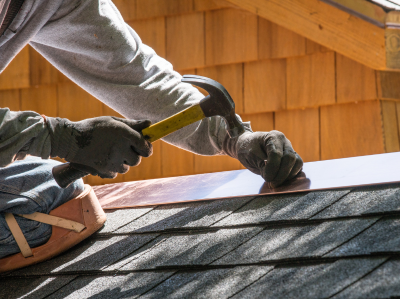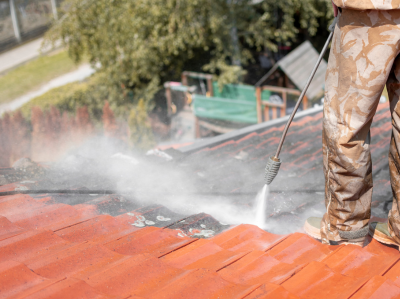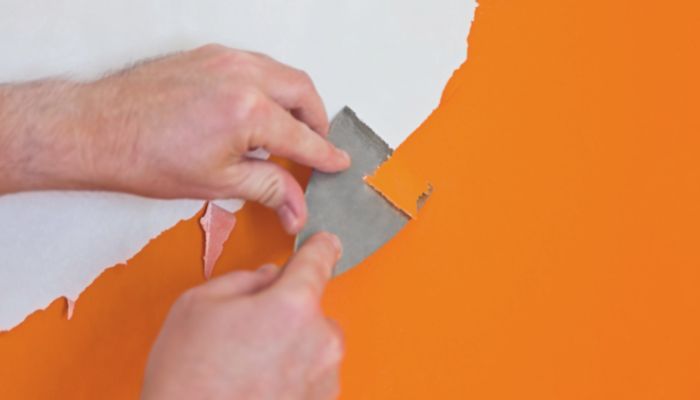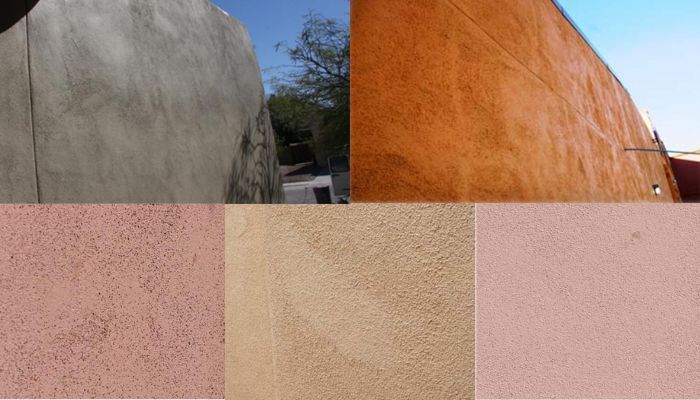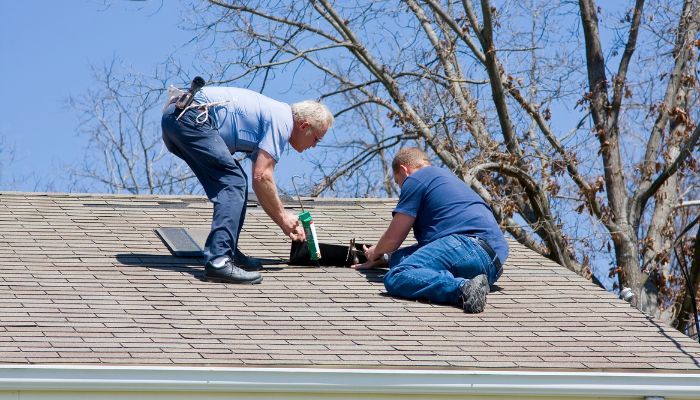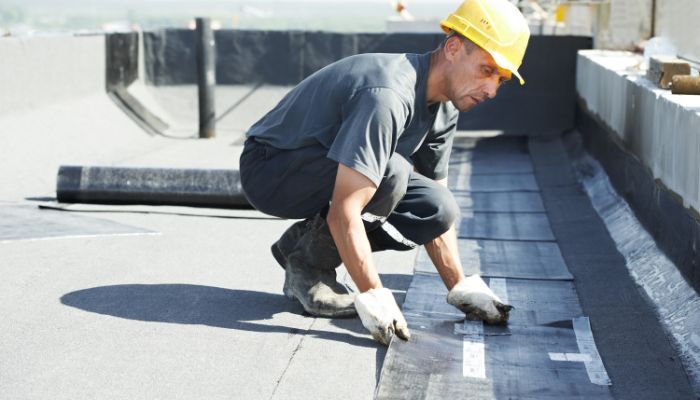Even though most people think of stucco as flat, or almost flat it is the opposite. Stucco is mountainous with hills, valleys, ridges, peaks, caves, and overhangs. In many ways viewing stucco is similar to a mountain from an airplane. Looking straight down from a high altitude, the mountains do not appear to have much definition, even flat in appearance. As you move closer, the mountains appear and have more details with jagged edges. Viewing stucco is similar. When the sun is almost parallel to the stucco wall, even small bumps and variations cast long shadows.
To some, the stucco will look more uneven and less desirable. In this article, I’ll discuss the process of stucco shadowing, the tools and materials you’ll need, and how to achieve the best results. By the end of the article, you’ll have a better understanding of this important concept and why it’s essential for your home’s exterior.
There is not a great deal of information written about stucco repair. Even determining the types of stucco finishes available is difficult, and there is an apparent reason for this. Tim Carter, the famous newspaper columnist, and contractor, wrote:
“Patching stucco so that you don’t see the repaired area is as difficult as patching a hole in a piece of fabric using scrap from the original bolt of cloth. It is virtually impossible to do. A stucco mason can create an infinite amount of textures depending upon the materials used to create the stucco and the tools used to finish it. Blending the new texture with the original is a true art and craft. If you succeed in creating the illusion, go out and immediately purchase a lottery ticket!”
Though he conveys that patching stucco is difficult, for people with experience and patience a good-looking (read not noticeable) stucco patch is possible in some situations. In many other situations patches that can be seen but are not obvious to casual observers are also achievable. But, unfortunately, there are still situations where the correct answer is to live with the defects or re-stucco the entire exterior of the building.
Stucco shadowing is an important concept that is often overlooked when it comes to stucco work. This concept involves creating the illusion of depth and shadows on the surface of a wall or other structure. The effect is created by applying a thin layer of stucco on the surface of the wall, then adding a heavier layer of stucco in certain areas to create the illusion of shadows. Stucco shadowing can be used to create a sense of depth and dimension on a wall, making it appear more interesting and aesthetically pleasing.
The first step to creating a stucco shadowing effect is to select the materials you will use. You’ll need a base layer of stucco, a deeper layer of stucco, and a finishing layer of stucco. The base layer should be applied in a thin and even layer, while the deeper layer should be applied in thicker and uneven layers to create the illusion of shadows. Finally, you’ll need a finishing layer to protect the stucco and add a final touch of texture and color.
Once you’ve selected the appropriate materials, you’ll need to prepare the wall surface. This involves cleaning and removing any debris, such as dirt and dust, from the wall. Then, you’ll need to prime the surface with a bonding agent to ensure a strong and lasting bond between the stucco and the wall.
After the wall is prepped, you can begin to apply the stucco. Start by applying the base layer of stucco in an even and thin layer across the entire surface. Then, you can begin to apply the deeper layer in certain areas to create the illusion of shadows. This can be done by applying the stucco in thicker and uneven layers, or by using a special stucco shadowing tool.
Finally, you’ll need to apply a finishing layer of stucco over the entire surface. This layer is important, as it will protect the stucco from the elements and add a final touch of texture and color to the wall.
Stucco shadowing is an important concept to understand when it comes to stucco work. By using this technique, you can create the illusion of depth and shadows on the surface of a wall, making it appear more interesting and aesthetically pleasing. With the right materials and preparation, you can easily create beautiful and unique stucco shadowing effects on your walls.
Advantages Of Stucco Shadowing
Stucco shadowing is a popular concept in architecture and interior design that involves creating a three-dimensional effect on walls and other surfaces. By adding texture and depth to a space, stucco shadowing can create the illusion of depth and movement that can have a powerful effect.
When it comes to the advantages of stucco shadowing, there are many to consider. For starters, it can add visual interest to a space. By creating shadows and angles, stucco shadowing can make a room look bigger and give it more character. It can also help to create a sense of cohesiveness within a room, as it can unify seemingly disparate elements.
Stucco shadowing can also be used to improve the durability of a wall or surface. By adding texture, it can help to reduce wear and tear and protect the surface from damage. Additionally, stucco shadowing can be used to disguise imperfections or blemishes on a wall or surface, and it can also provide additional insulation.
Finally, stucco shadowing can be used to create a more luxurious look and feel. By adding texture and depth, it can create a more sophisticated and elegant atmosphere. It can also be used to create a warm and inviting atmosphere, as the shadows and angles can create an illusion of depth and movement.
Overall, stucco shadowing can be an effective way to add visual interest, improve durability, and create a more luxurious atmosphere. It can be used to create a sense of cohesiveness and can also disguise imperfections and provide additional insulation. When done correctly, stucco shadowing can be an invaluable tool for creating a beautiful, inviting, and unique space.
How To Identify Stucco Shadowing
Now that you know the advantages of stucco shadowing, you may be wondering how to identify it. The first step is to take a close look at the building’s exterior. Stucco shadowing can be identified by a distinctive texture on the walls, which may look like a pattern of ripples or waves.
The second step is to look for signs of fading. Stucco shadowing can cause paint to fade, which can make the walls appear darker or lighter than the surrounding structures. Additionally, stucco shadowing can cause cracks and other damage to the walls, so be sure to look for any signs of deterioration.
Finally, you can look for the presence of stucco sand. This is a course material that is used to create the texture of stucco shadowing. If stucco sand is present, then you can be sure that the building has been stucco shadowed.
Identifying stucco shadowing can help you determine whether it is necessary for your building. If you find that the exterior walls are in need of repair or that the paint has faded, then it is likely that stucco shadowing will be beneficial. By taking the time to identify stucco shadowing, you can make sure that your building looks its best.
Types Of Stucco Shadowing
Now that you know how to identify stucco shadowing, it’s important to understand the different types of stucco shadowing. Stucco shadowing can be classified into two main types: light and dark shadowing.
Light stucco shadowing is usually found on light-colored stucco and gives the wall an even, matte finish. This type of stucco shadowing is often used to create a subtle and elegant look. Dark stucco shadowing, on the other hand, is used to create a dramatic and bold effect. This type of shadowing usually features dark streaks or splotches on the wall and can be used to create a striking visual contrast.
Along with these two main types of stucco shadowing, there are also several other variations. For example, you can find stucco shadowing that has an ombre effect, which is when the shadowing gradually lightens or darkens in color. You can also find stucco shadowing that is a combination of both light and dark colors. This type of shadowing can create an eye-catching effect and can be used to draw attention to certain areas of the wall.
Stucco shadowing is an important concept to understand when it comes to creating a unique and beautiful look for your walls. Whether you’re going for a subtle and elegant look or a bold and dramatic one, there’s a stucco shadowing variation that can help you achieve the perfect look for your home.
Preparation For Stucco Shadowing
Before you can begin stucco shadowing, there are a few important steps that must be taken in order to ensure a successful end result. The first step is to prepare the surface that you’ll be applying the stucco to. This means making sure that it is clean, free of debris, and free of any oils or grease that can interfere with the adhesive.
Next, I like to measure the area that I’m going to be covering. This will help me to determine the amount of stucco mix that I’ll need to create the desired effect. Once I have the measurements, I can start gathering the materials that I’ll need. This includes the stucco mix, a trowel, a hawk, and a damp cloth.
Before I start mixing the stucco, I like to do a test patch. This allows me to make sure that the stucco is the correct consistency, and that it’s ready to be applied. Once I’m happy with the test patch, I can move on to the actual application.
Stucco shadowing is a great way to add texture and dimension to any surface. But in order to ensure a successful end result, it’s important to take the necessary steps to prepare the surface and gather the materials before you begin. With the right preparation, you’ll be sure to create a beautiful finished product that you can be proud of.
Applying Stucco Shadowing
Now that you’ve completed the preparation for stucco shadowing, it’s time to start applying the stucco. Depending on the area of the wall you’re working on, you may need to make some adjustments to the mixture beforehand. For example, if you’re working on a vertical surface, you may need to thin out the stucco with some water to make it easier to apply.
Once you’ve adjusted the mixture to your needs, you’ll be ready to start applying the stucco. I like to use a specially designed stucco trowel for this, as it helps to create a smooth and even finish. When you’re ready to begin, start at the bottom of the wall and work your way up. You’ll want to make sure you apply the stucco in thin, even layers.
As you work your way up the wall, be sure to keep an eye on the shadows. This is the most important concept when it comes to stucco shadowing. You want to create a natural-looking texture that emulates the shadows of the environment around it. Pay close attention to the light and the direction of the shadows, and make sure to apply the stucco accordingly.
Once you’ve finished applying the stucco, you can begin to add a little bit of texture. Use a stiff brush to create some subtle ridges and peaks that will help to create a more natural look. This is a great way to add some character to your stucco shadowing and to create a unique and eye-catching effect.
Applying stucco shadowing is an art form that requires patience and practice. But with a little bit of effort, you can create beautiful and unique wall textures that will make your home stand out from the rest. Just remember to keep the shadows in mind and to apply the stucco in thin, even layers, and you’ll be sure to have a stunning result.
Finishing Touches For Stucco Shadowing
Now that you’ve applied the stucco shadowing, you’ll want to finish off the look with some final touches. This is the part of the process that will really tie the look together and make your stucco shadowing stand out. Here are some of the best ways to give your stucco shadowing a professional finish.
First, you’ll want to use a small brush to fill in any gaps or cracks that may have been left by the stucco shadowing. I like to use a soft-bristled brush and a bit of white paint to fill in any small gaps. This will help to create a smooth and seamless look.
Next, you’ll want to add a bit of texture to the stucco shadowing. This can be done by using a variety of different tools, such as a trowel, a paint roller, or a sponge. This will help to give the stucco shadowing a distinctive and unique look.
Finally, you’ll want to add a bit of color to your stucco shadowing. This can be done by adding a bit of paint to the mix, or by using a colored brush. If you’re feeling adventurous, you could even add some glitter or glitter paint to the mix. This will help to give your stucco shadowing a unique and eye-catching look.
With these finishing touches, you’ll be sure to have a stunning and professional-looking stucco shadowing. Just remember to take your time and be precise with your brush strokes, and you’ll be sure to have a beautiful and unique stucco shadowing in no time.
Tools Needed For Stucco Shadowing
Now that you know the most important concept of stucco shadowing, it’s time to talk about the tools you’ll need to do the job. Depending on the type of stucco you’re using, the tools may vary, but there are a few that you should always have on hand when you’re shadowing.
First off, you’ll need a good quality stucco trowel. This is the tool that you’ll use to apply the stucco and create the design you want. It’s important to choose a trowel that’s the right size and shape for the job. A trowel that’s too small can make it difficult to get a smooth finish, and one that’s too large can make it hard to create the detail you need.
Next, you’ll need a mixture of sand and cement to create the stucco. The amount of sand and cement you use will depend on the desired final look, so you’ll need to experiment with the ratio until you find the right balance.
You’ll also need a few other tools to help you get the job done. These include a damp sponge, a bucket of water, a whisk broom, a spray bottle, and a soft-bristled brush. The sponge will be used to dampen the stucco during the application process, the bucket of water will be used for rinsing, the whisk broom will help to remove excess material, the spray bottle will be used to lightly mist the stucco, and the soft-bristled brush will be used to help create the shadows.
By having all the right tools on hand, you’ll be able to get the job done quickly and easily. With the right tools, you can create the beautiful stucco shadowing designs that will give your home a unique and stylish look.
Stucco Shadowing Techniques
Now that you have all the tools you need for stucco shadowing, it’s time to learn the techniques needed to create a beautiful design. Stucco shadowing is a unique way to add texture and depth to any surface, and the key is to create a variety of shadows. This can be done in a variety of ways, depending on the look you are going for.
The most basic technique is to use a brush to create an uneven, textured surface. You can use a stiff brush to create thick, dark shadows, or a softer brush to create more subtle, light shadows. You can also use a sponge to create a softer, more mottled effect.
Another technique you can use is to thin the stucco with a specialized thinning agent. This will create a more even texture, and will allow you to create the perfect balance of light and dark. You can also mix the thinning agent with paint to create a more vibrant look.
Finally, you can use a spray gun to create a wide variety of shadows. This technique is great for creating a more dynamic look, and can also help you to create a uniform look. Just make sure to adjust the pressure and distance of the spray gun depending on the look you are going for.
Stucco shadowing can be a great way to add texture and depth to any surface. With the right tools and techniques, you can create a beautiful design that will add character and style to any room. So, if you’re looking to add a unique touch to your home, then stucco shadowing is definitely something you should try!
Professional Tips For Stucco Shadowing
Now that you know the basics of stucco shadowing, let’s take a look at some professional tips you can use to make your project even better. Keep in mind that these tips are specific to stucco shadowing, and may not work for other types of construction.
First, let me tell you about the importance of light. Lighting plays a huge role in how dramatic your shadows will look, so take the time to get the lighting just right. The best way to do this is to experiment with different angles and intensities until you find the perfect combination.
Next, I’d suggest considering a textured stucco finish. This can help to add depth to your shadowing, and will have a better chance of catching and reflecting the light. Not only that, but it can also add an interesting visual element to your project.
Finally, you’ll want to consider the color of your stucco. Darker colors will create deeper shadows, while lighter colors will create brighter, more dramatic shadows. Experiment with different colors to see which one works best for your project.
Stucco shadowing is an important concept to understand when it comes to construction and design. By following these professional tips, you’ll be able to create stunning shadows that will bring your project to life. So, take the time to experiment and find the perfect combination of lighting, texture, and color, and you’ll be sure to have a beautiful and unique result.
Conclusion
Stucco shadowing is a concept that is essential when it comes to creating a beautiful and durable stucco finish. It involves using shading techniques to create a three-dimensional look on the surface. It is important to keep in mind that the stucco finish should be applied in even layers to ensure a uniform and lasting finish.
Having the right tools and materials is also essential for a successful stucco finish. Using high-quality stucco and the correct application techniques can help to ensure a long-lasting and attractive finish. Additionally, it is important to take the time to practice and perfect the stucco shadowing technique before applying it to a project.
With the right approach, stucco shadowing can bring a unique and beautiful look to any project. Taking the time to practice and perfect the technique can help you achieve the desired effect or hire a professional such as AA Brite.
FAQs
What Is The Cost Of Stucco Shadowing?
When it comes to stucco shadowing, one of the most important concepts to understand is cost. Stucco shadowing can be a great way to add depth and texture to your home’s exterior, but it can also be a pricey undertaking. The cost of stucco shadowing can vary widely depending on the size of the project and the type of materials used.
To get a better idea of the cost of stucco shadowing, I recommend speaking with a professional contractor. They can provide you with a more accurate estimate based on your specific needs. Generally speaking, you can expect to pay between $3 and $15 per square foot for stucco shadowing. The total cost of the project will also depend on any additional materials or labor needed, such as scaffolding and masonry tools.
If you’re considering stucco shadowing for your home’s exterior, it’s important to factor in the cost before making a final decision. While stucco shadowing can be a great way to add interest and texture to your home, you may find that the cost is simply too high for your budget. If this is the case, there are other options to consider such as faux stone or brick veneer.
No matter what type of stucco shadowing you choose, be sure to do your research and get multiple quotes before making a final decision. Understanding the cost of stucco shadowing can help you make an informed decision that fits your budget.
What Maintenance Is Required For Stucco Shadowing?
Now that you know what stucco shadowing is and the cost of having it installed, it’s also important to understand what kind of maintenance it requires. Generally speaking, stucco shadowing doesn’t require much in terms of upkeep, but it is important to do some basic maintenance to keep it looking its best.
For starters, I recommend checking your stucco shadowing regularly for cracks or damage. This will help to ensure that your home is protected from water damage or other issues that could arise. Additionally, it’s important to keep an eye on the caulking between the stucco and the wall to make sure it’s still secure.
It’s also a good idea to wash the stucco shadowing every couple of months or so. Using a mild detergent and a soft brush, you can easily remove any dirt or grime that may have built up over time. Be sure to rinse off the detergent thoroughly afterwards to avoid any damage.
Finally, it’s important to inspect the stucco for any discoloration. Stucco will naturally fade over time, so it’s important to check it regularly to make sure it still looks like the day it was installed.
Overall, stucco shadowing requires very little in terms of maintenance. With some basic care and upkeep, you can ensure that your stucco shadowing will look great for years to come.
Is Stucco Shadowing Suitable For Outdoor Use?
Now that we’ve covered the maintenance requirements for stucco shadowing, you may be wondering if it’s suitable for outdoor use. The answer is yes! Stucco shadowing is an excellent choice for outdoor applications, as it offers both durability and beauty. Not only will it look great outdoors, but it is also highly resistant to weathering and fading.
When it comes to choosing a product for outdoor use, it’s important to consider the environment. If your area is subject to frequent rain, snow, or other weather conditions, then you’ll want to make sure that the stucco shadowing you choose is designed to handle these conditions. You’ll also want to make sure that the product is designed to withstand UV rays, and that it won’t fade or deteriorate over time.
Although stucco shadowing is a great choice for outdoor use, it’s important to remember that it still requires some maintenance. You’ll want to make sure to clean it regularly, to remove any dirt or debris that may have accumulated. You’ll also want to check for any signs of damage or wear and tear, and repair any issues as soon as possible.
Finally, it’s important to remember that stucco shadowing is made from a natural material, so it is subject to some natural wear and tear. If you live in an area with extreme weather conditions, you may find that you need to repair or replace the material more often than in more temperate climates.
Overall, stucco shadowing is an excellent choice for outdoor use. It is both durable and beautiful, and with proper care and maintenance, it can last for years. Just remember to clean and inspect it regularly, and to repair any issues as soon as they arise. With the right product and a little bit of TLC, your stucco shadowing will look great outdoors for years to come.
Does Stucco Shadowing Require A Sealant?
When it comes to stucco shadowing, one of the most important considerations is whether or not it requires a sealant. The answer is yes – in order for stucco shadowing to last and look its best, it should be sealed with an exterior grade sealer. The sealant will provide an extra layer of protection against the elements and help keep the stucco shadowing looking vibrant and beautiful.
I should note that not all sealers are created equal. It’s important to choose one that is specifically designed for stucco shadowing. These sealers will help to protect the stucco shadowing from fading and chipping, as well as provide extra water resistance.
Applying the sealer is easy – simply brush it on and let it dry. Make sure to apply two coats for extra protection. You should also reapply the sealer every few years, or whenever you notice that it’s starting to wear off.
By taking the time to seal your stucco shadowing, you can ensure that it will look great for years to come. Not only will it add an extra layer of protection against the elements, but it will also help to keep your stucco shadowing looking vibrant and beautiful. So don’t forget to seal your stucco shadowing – it’s an important step in keeping it looking its best.
Are There Any Environmental Benefits To Using Stucco Shadowing?
Now that we know what stucco shadowing is and why it’s important, let’s explore some of the environmental benefits of using it.
When it comes to the environment, stucco shadowing is a great choice. It uses less energy to create the shadowed finish and is the most sustainable way to add texture to a building. It doesn’t require any additional materials, like paints or sealants, so it doesn’t create any extra waste. Plus, it can be easily recycled or reused, so it won’t end up in a landfill.
Stucco shadowing is also a great choice for homes or buildings in areas prone to natural disasters. It helps to provide additional protection against strong winds, heavy rains, and other extreme weather conditions. This helps to keep buildings safe and secure, which is important for both the environment and people’s safety.
Stucco shadowing is also a great way to reduce energy costs. By using the shadowing technique, you can insulate your home or building from the outside elements. This helps to keep your home or building cooler in the summer and warmer in the winter. This helps to reduce energy costs and helps to conserve energy in the long run.
Overall, stucco shadowing is a great choice if you want to do your part to help the environment. Not only does it provide a beautiful and unique look, but it also helps to reduce energy costs and provides additional protection against natural disasters. So if you’re looking for an eco-friendly option, stucco shadowing is definitely worth considering.


